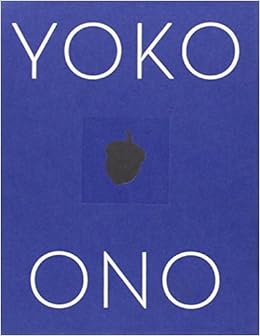In thinking about new approaches to teaching creative writing, approaches that don’t rely so much on the idea of “craft” (more on this in another post) as they do on exploration, close reading, and method (or practice), I thought I’d take a look at Yoko Ono’s Grapefruit. Known as conceptual art, this collection of “event scores,” instructions for art, or events, rather than the art itself, might seem like a ridiculous thing to use in a creative writing class, but I think it offers a few different possibilities.
The most obvious way to use this book is as an introduction to conceptualism (and Fluxus). An exercise in imitation might ask students to imitate the style, method, and form of the event scores in the book by creating similar impossible (or improbable) artworks by describing them. Pretty straightforward, but what’s the goal of such an experiment? As an experiment in form and creativity, the experiment asks students to imagine something they couldn’t or wouldn’t normally do. For example, in “HIDE-AND-SEEK PIECE” Ono asks readers to “Hide until everybody goes home./Hide until everybody forgets about you./Hide until everybody dies.” Not something anybody is likely to actually do, but by imagining situations, or events, students are pushed away from the usual way of thinking about poetry and fiction. At least that’s the idea.
A second thought is to use these as prompts–what would a story generated by “HIDE-AND-SEEK PIECE” look like? Taken a step further, could students devise scores for experiments they might actually perform, and then write about (or not). Maybe these scores would start to look like CAConrad’s somatic experiments. I’m thinking about the more “doable” pieces in Grapefruit. For example, using “PAINTING TO EXIST ONLY WHEN IT’S COPIED OR PHOTOGRAPHED” (“Let People copy or photograph your/paintings./Destroy the originals.”) students might exchange detailed descriptions of locations and/or people and then copy each other’s work, letting the original serve as inspiration for a distorted, degraded, or enhanced “copy” of another piece of writing. What would a “copy” of a photograph in writing look like? While not a lot of the experiments in Grapefruit lend themselves to this sort of thing, plenty do. I’m thinking about using a combination of these experiments in my class this fall.


Buy Acorn (Ono’s Sequel to Grapefruit) at Amazon
Further Investigation:
The Fluxus Performance Workbook
A 2009 performance of George Brecht’s “Event Score” (1966)Â
CAConrad’s ECODEVIANCE: (Soma)tics for the Future Wilderness
Yoko Ono - Eyeblink (1966) – via UbuWeb